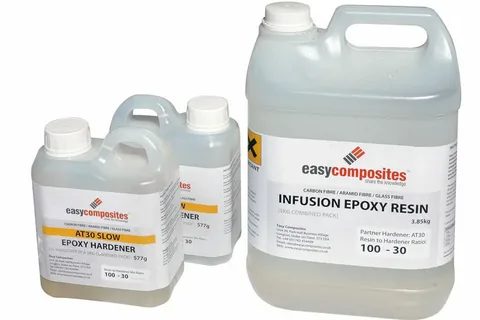Epoxy Resin vs E3000: Key Differences for Professional Use 2024
Kifayat Ullah Mohmand 9/20/2024
Epoxy Resin vs E3000: Key Differences for Professional Use
When it comes to adhesives and bonding marketers, specialists have a huge shape of options to pick out out out from, and the most famous options are epoxy resin and E3000. While each merchandise serves comparable functions, they have tremendous abilities that reason them to be appropriate for incredible applications. Whether you are in introduction, crafting, woodworking, or running on commercial obligations, expertise in the versions of epoxy resin and E3000 is essential for selecting the fabric to your dreams.
In this text, we will discover the vital aspects versions of epoxy resin and E3000, talk about their blessings and drawbacks, and provide insights on the equal time to use every for expert capabilities.
Table of Contents
What is Epoxy Resin?
Epoxy resin is a -difficulty adhesive that consists of resin and a hardener. When combined, the 2 additives chemically react to form a strong, durable bond. Epoxy resin is ideal for its excessive strength, resistance to warmth, and functionality to bond to a huge form of surfaces, alongside elements metallic, wooden, plastic, and urban.
Epoxy resin is drastically applied in agency settings for responsibilities together with coating, sealing, and bonding. It’s moreover famous inside the artwork and craft worldwide for making earrings, growing resin artwork, and coating surfaces to give them a graceful forestall. Its versatility makes it a skip-to adhesive for lots of professionals.
Key Features of Epoxy Resin:
- Strength: Epoxy resin workplace artwork has a robust, prolonged-lasting bond that is proof in opposition to strain and placed on.
- Durability: It can resist harsh environmental conditions, on the side of immoderate warm temperatures, moisture, and chemical substances.
- Versatility: Epoxy resin can bond with many substances, which incorporate metallic, glass, plastic, and timber.
- Clarity: Many sorts of epoxy resin dry easily, making it a well-known desire for coating surfaces and developing progressive finishes.
- Customizability: Pigments, dyes, and top-notch components may be mixed with epoxy resin to create custom solar sun shades and effects.
What is E3000?
E3000 is a sort of enterprise-energy adhesive recognized for its flexibility and bonding capabilities. Unlike epoxy resin, E3000 is a one-factor adhesive, because of this it doesn’t require mixing in advance than use. It’s ready to use right away from the tube, making it a greater handy possibility for quick preservation and obligations.
E3000 is usually used for bonding materials like rubber, leather-based-based-based completely genuine, cloth, timber, and plastic. Its particular asset is its flexibility, which permits it to bond substances that might need to stretch or drift. This makes E3000 a fantastic choice for applications in which motion or vibration is predicted, which encompasses footwear, upholstery, or outdoor devices.

Key Features of E3000:
- Flexibility: E3000 stays flexible after drying, making it top-notch for bonding substances that want to bend or stretch.
- Ease of Use: As a one-detail adhesive, E3000 is easy to use and doesn’t require blending.
- Strong Bond: Despite its flexibility, the E3000 creates a robust, durable bond that might withstand everyday wear and tear.
- Waterproof: E3000 is water-evidence, making it appropriate for outdoor use and in areas exposed to moisture.
- Heat Resistance: E3000 can manipulate some temperatures, making it appropriate to be used in every indoor and out of doors setting.
Key Differences Between Epoxy Resin and E3000
Now that we’ve included the important competencies of each epoxy resin and E3000, let’s take a closer look at their key versions. These versions can assist experts in deciding which adhesive is tremendous for his or her particular dreams.
1. Bonding Strength

- Epoxy Resin: Epoxy resin is understood for its awesome electricity. It creates an inflexible, immoderate energy bond that would cope with heavy hundreds and resist impact. This makes it suitable for enterprise organization applications which incorporate manufacturing, car protection, and steel bonding.
- E3000: While E3000 is likewise robust, its bond is extra flexible. It’s first-class for conditions in which the bonded substances may additionally want to transport, stretch, or flex. For example, the E3000 is regularly used in the manufacturing of shoes, bags, and sports sports devices because it lets in for movement without breaking the bond.
2. Flexibility
- Epoxy Resin: Once cured, epoxy resin turns rigid and hard. This is proper for obligations that require a sturdy, strong bond, but it cannot be suitable for materials that need to maintain flexibility.
- E3000: E3000 stays bendy even after drying, making it a better desire for materials that need to bend or go along with the glide. Its flexibility makes it quality for bonding fabric, rubber, and specific smooth materials.
3. Ease of Application
- Epoxy Resin: Epoxy resin is a -element adhesive, because of this you need to mix the resin and hardener in advance rather than utilizing it. This may be a bit extra time-consuming, especially in case you’re running on a massive venture. Once blended, epoxy resin begins to remedy, so you’ll want to use it inner an excessive exceptional time frame.
- E3000: E3000 is a one-trouble adhesive that doesn’t require blending, making it a good deal less difficult and faster to use. It’s prepared to use right now from the tube, making it an extra reachable preference for small safety and brief fixes.
4. Curing Time
- Epoxy Resin: Epoxy resin generally takes numerous hours to treat, with whole curing frequently taking 24 hours or greater. This longer curing time permits the adhesive to bond securely, but it can be a disadvantage in case you need rapid results.
- E3000: E3000 has a faster curing time in the evaluation of epoxy resin. While the fine drying time can vary depending on the environment, E3000 normally gadgets inner a few minutes and actually treatment alternatives in some hours. This makes it a better desire for short obligations or renovation.
5. Temperature and Environmental Resistance
- Epoxy Resin: Epoxy resin is in particular proof in the direction of extreme temperatures, chemical substances, and environmental factors like moisture and UV moderate. This makes it wonderful for outside and agency applications, together with sealing concrete or repairing gadgets.
- E3000: E3000 is likewise evidence of environmental elements, but it’s not as durable in intense conditions as epoxy resin. While it could cope with moderately warm temperatures and moisture, it could not be the terrific desire for tasks uncovered to immoderate warm temperatures or harsh chemical materials.
6. Clarity and Finish
- Epoxy Resin: One of the standout skills of epoxy resin is its clean prevent. Many types of epoxy resin dry to an immoderate gloss, apparently preventing, that is why it’s often applied in artwork and jewelry making. The easy, smooth ground is also well-known for coating wood and countertops.
- E3000: E3000 doesn’t provide the same clean, clean forestall as epoxy resin. It’s a more practical adhesive that is regularly used for hidden bonds or packages in which aesthetics are not as critical.
When to Use Epoxy Resin vs. E3000
Choosing between epoxy resin and E3000 is primarily based completely upon the perfect requirements of your venture.

- Use Epoxy Resin:
- When you need a robust, rigid bond.
- For responsibilities that require resistance to warmth, chemical substances, or moisture.
- When running with hard substances like steel, timber, or plastic.
- For ingenious duties that require a smooth, smooth prevent.
- Use E3000:
- When you need a bendy bond that can cope with motion.
- For duties concerning material, rubber, leather-based-primarily based-primarily based, or mild substances.
- When you need a short and smooth adhesive without mixing.
- For maintenance and programs that require water resistance, however, don’t face excessive temperatures. Epoxy Resin vs E3000.
Conclusion
Both epoxy resin and E3000 are extraordinary adhesives, however they serve awesome functions. Epoxy resin is awesome for responsibilities that require strength and durability, at the same time as E3000 is proper for bendy bonding and quick fixes. Understanding the versions amongst those adhesives will assist specialists select out the right one for his or her particular desires, ensuring achievement in their tasks.
Here are a few regularly asked questions (FAQs) for the item “Epoxy Resin vs E3000: Key Differences for Professional Use”:
FAQs:
- What is the number one distinction between E3000 and epoxy resin?
- The essential difference is that E3000 is a form of flexible polyurethane adhesive designed for bonding various surfaces, At the same time epoxy resin is a flexible, inflexible adhesive typically used for coatings, casting, and bonding.
- Which one is greater durable: E3000 or epoxy resin?
- Epoxy resin is generally extra long-lasting in terms of hardness and resistance to environmental factors. E3000 gives extra flexibility, making it suitable for packages wherein some movement or flex is needed.
- Can E3000 and epoxy resin be used interchangeably?
- No, they serve outstanding skills. E3000 is better for flexible bonding, at the same time as epoxy resin is proper for rigid systems and surfaces requiring hardness.
- Is E3000 much less complicated to apply than epoxy resin?
- E3000 is heaps much less hard to use in some instances due to its greater flexible nature. Epoxy resin requires precise mixing and curing time but offers more potent bonds as quickly as set.
- Which one is higher for outdoor duties?
- Epoxy resin is typically more climate-resistant and more suitable for outside projects, however, if flexibility is needed, E3000 can be a remarkable choice relying on the software software program.
- How prolonged does every take to treatment?
- Epoxy resin typically takes 24-forty eight hours to remedy simply, whilst E3000 can treat faster, often in some hours, depending on the product and environmental situations.
- Can each E3000 and epoxy resin be sanded and painted over?
- The epoxy resin may be sanded and painted as quickly as truly cured, at the same time as E3000, being more flexible, may not be as clean to sand and paint.
- Which one is greater evidence in competition to chemical substances?
- Epoxy resin usually gives better chemical resistance compared to E3000, particularly in employer packages.
- Are each adhesive heat-resistant?
- Epoxy resin inclines to have higher warmth resistance in assessment to E3000, which may also additionally harm down below excessive temperatures.
- Which one have to I pick for bonding metals?
- Epoxy resin is often a higher possibility for bonding metals because of its superior power and sturdiness. However, E3000 can paintings for metals if flexibility is needed.




2 Comments
linksmrkm@gmail.com
September 28, 2024
very good mashallah
Exploring The Most Impactful Posts By Reddit User ActuallyHaydenc - Kmlinkbooster.com 024
October 3, 2024
[…] one of the most crucial online corporations in the global, has a manner of bringing hobby to individuals who stand out with engaging, precise, […]